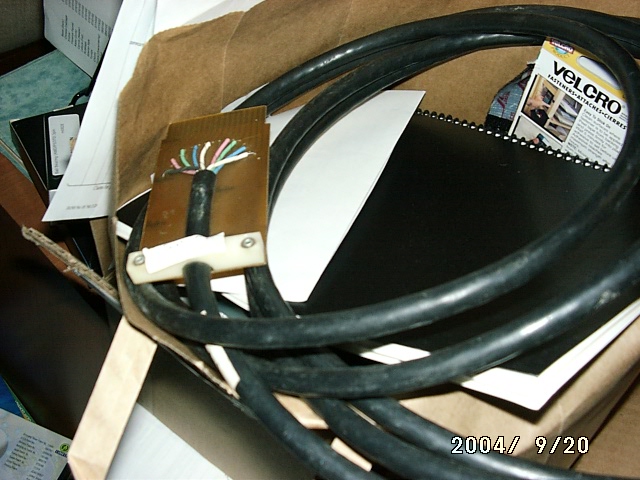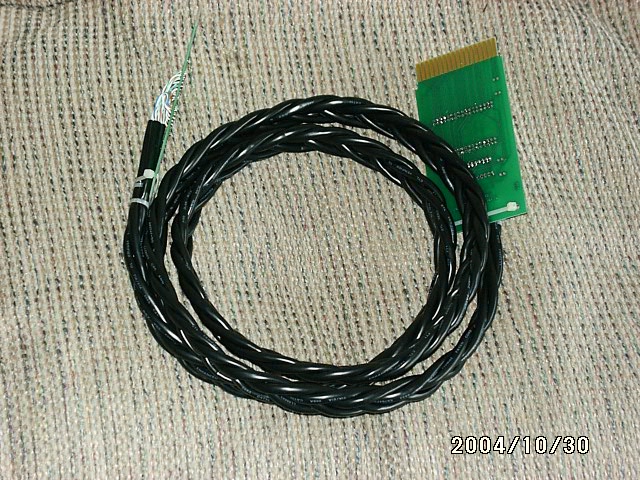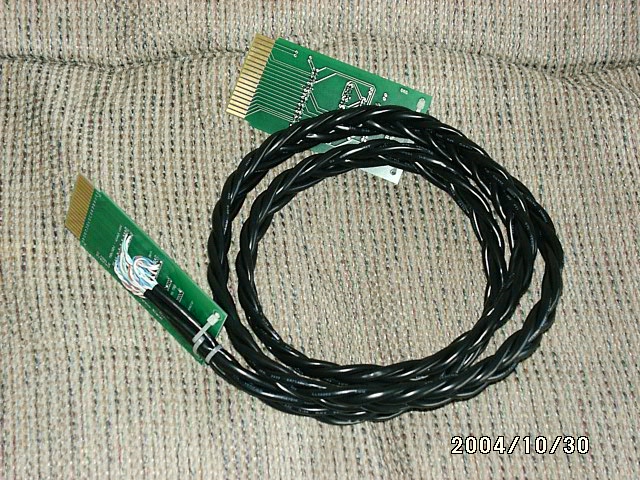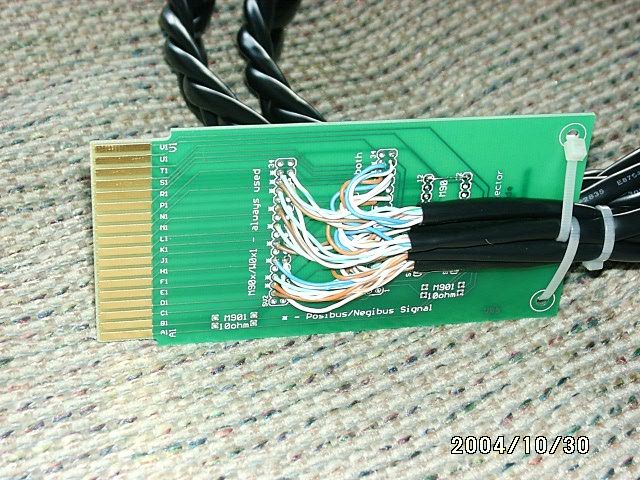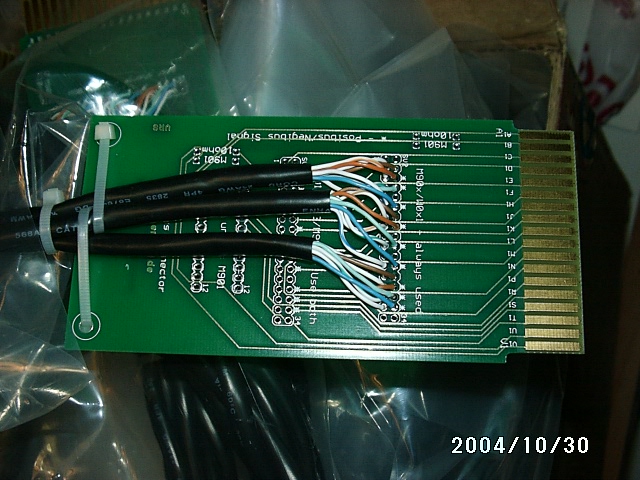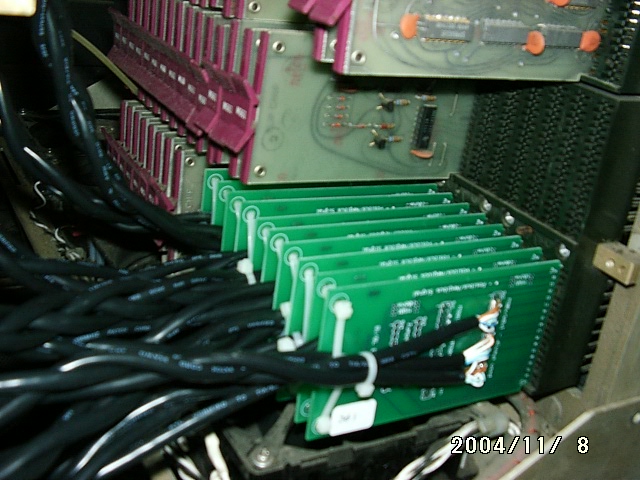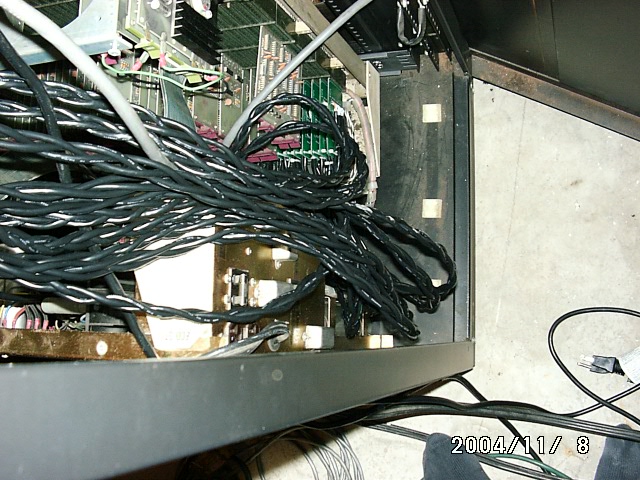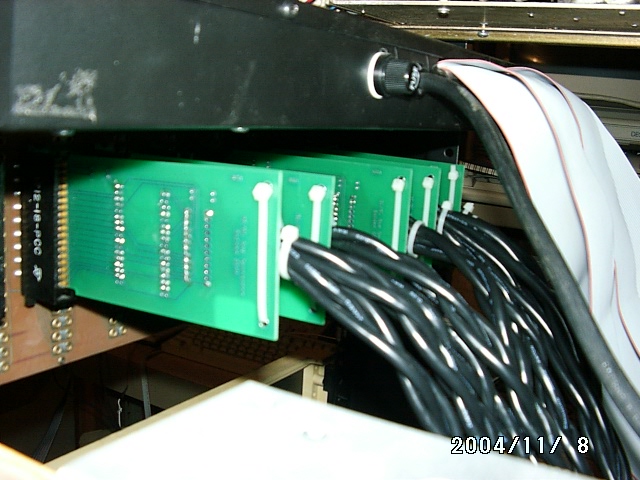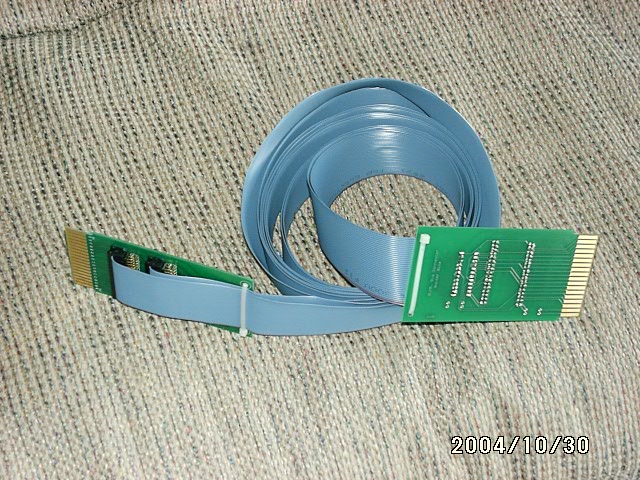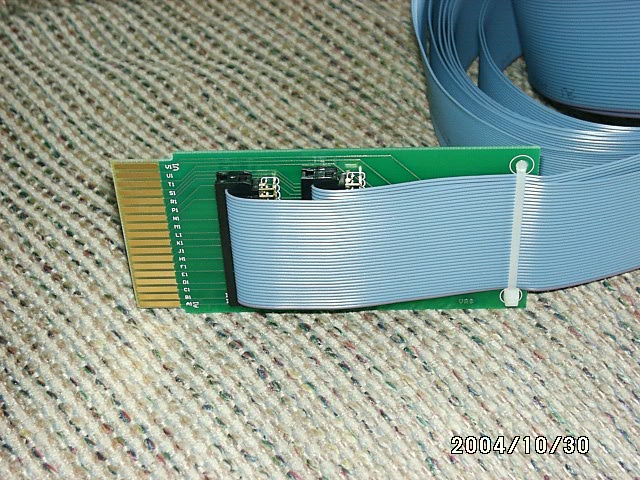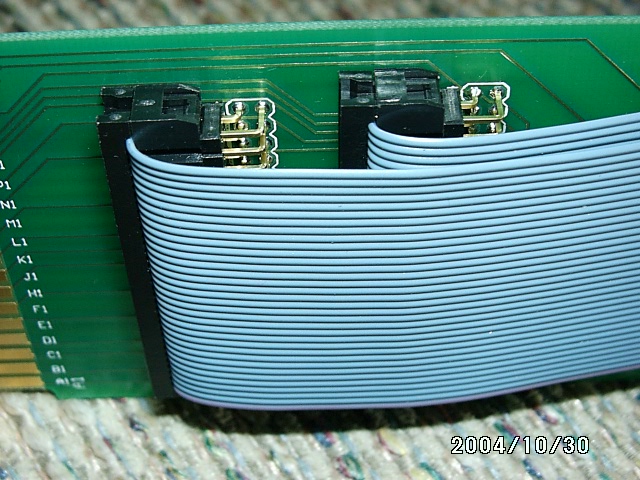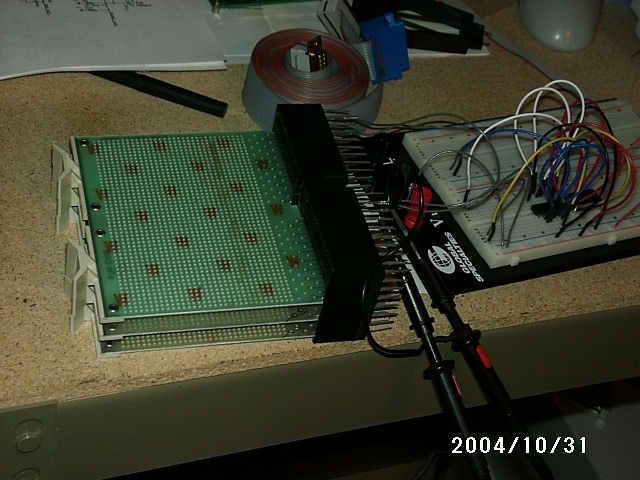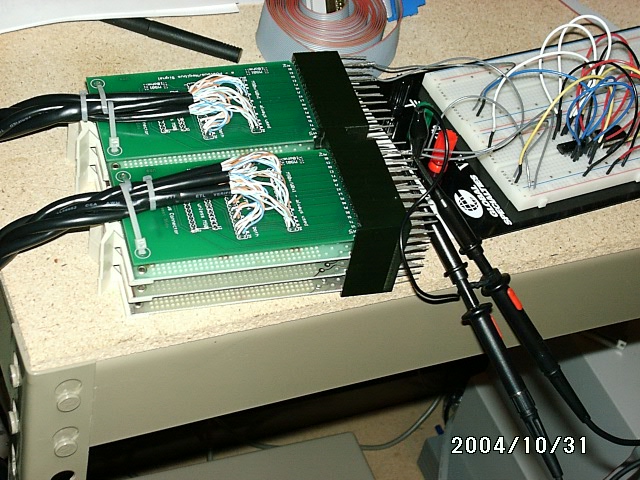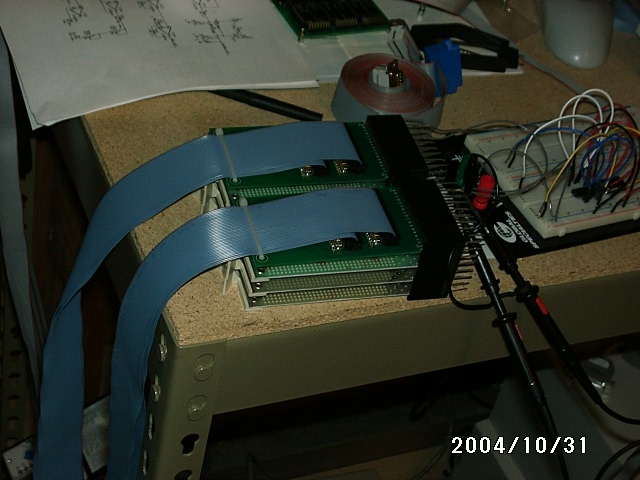|
Home
| 32KOmnibus
| 4sale
| 8L
| 8a
| 8e
| 8i
| 8s
| C
| FPGA8i
| blog
| cables
| cad
| computerlab
| decmateI
| decmateII
| decmateIII
| df32emul
| documents
| dsd410
| flipchip
| frontpanel
| kc8a
| la36
| lab
| omnibus
| papertape
| pc04
| repair
| rk05
| rl02
| rx02
| rx08
| sbc6120
| software
| tc01
| tools
| tty33
| tty38
| tty43
| ttycards
| tu10
| tu55
| tu56
| typeset
| vt78
|
Cable Replacements
|
One of the recurring problems with vintage gear is that the cables are separated from the machines and lost. Some cables are also damaged by wear and tear, but those could probably be fixed or replacement vintage cables could be located, except for the chronic shortage created by the ones that are lost. I decided that it would be necessary to create modern replacements for various cables in my vintage gear. This page chronicles the project to create these modern cables. The new cables have to fit in place of the old, and they have to perform at least as well as the vintage cable. So, let's look at a vintage Negibus cable:
To give some perspective to the problem, it should be noted that each device connected to the Negibus needed at least six such cables, and often twelve were needed (for Data Break, or DMA devices as they are called in modern gear). You probably can't tell from the picture, but what you are looking at is nine coaxial cables, in a single sheath, connected to a single-sided "paddle card" PCB, which fits into a socket. There is a paddle card on each end, and you start at the CPU, cabling to the first device, then from there to the second, and in the last device you place a similar paddle with some terminating resistors. Each cable carries nine (count 'em!) signals, so an eleven cable system can carry a whopping 99 signal bus :-)! A Posibus cable is similar, but uses both sides of the paddle cable to carry 18 signals. As a result, a non-DMA device needs only three Posibus cables, and a Data Break device needs only five (instead of 11). Let's go back to what I said earlier. The cable has 9 coaxial cables in a single sheath. That has big implications for the cable's electrical specifications. The coaxial construction means these cables were wicked fast, and had very little noise. The PDP-8's rely on this fairly heavily. The allowable distance from the farthest device to the CPU, measured in cable feet, depends critically on the speed of these cables, and the reliability of the result depends on the lack of noise. There is actually a quote in a Field Service guide that I read to the effect that FE's found installing ribbon cables instead of coaxial cables would be fired! (As a practical matter, ribbon cables did get used, though they were special "flexprint" ones made by DEC.) I looked hard for suitable wire to use instead of the magic coaxial cables used by DEC. For a few days it looked like it was not going to be feasible to find an appropriate wire to make the cables. Conventional ribbon cable has all the right electricals, and some of it is acceptably fast, but unshielded ribbons are full of crosstalk noise, particularly if you allow 11 of them to lie on top of each other! And shielded ribbon has a lower impedance than unshielded ribbon, which made it unsuitable. Then I found a wire which is basically perfect for the job. It is impedance controlled, with the correct impedance, is fast, and very low noise. Moreover, it is practically free, with large amounts of it sold commercially everyday. The cable is CAT-5 :-). I picked up a bunch of it on eBay, probably from someone's upgrade to CAT-5E. There were a number of folks talking to me about the project, and none of them liked the idea of using CAT-5 much. Everyone wanted to know if they could use ribbon instead, since that was much easier to hook up :-). So, I designed a PCB that would have holes in a pattern that could take a header and an IDC ribbon cable, or could take the individual wires of a CAT-5 cable. Notice that the CAT-5 cable has 4 pair of wires in it, and we need 9 wires. So, we will need 3 CAT-5 cables to replace the DEC coax. Three of the twisted pair will be unused, so I elected to ground one of the 4 pair in each CAT-5 cable. Here are a couple of pictures of one of my replacements:
Since I don't have any actual Negibus gear (all my systems are Posibus), I have actually used 5 CAT-5 lengths, grounding a couple of pairs to get the required 18 pair of wires. To keep the five CAT-5 cables together, I have simply braided them. I think the braid also gives a rugged, retro look :-). Here's a close-up of the paddle cards for a Posibus and a Negibus cable:
Simple zip ties attach clamp the cables into a bundle and form a strain relief for the paddle cards at each end. I built yet another kind of Posibus cable. Some PDP-8/I's use a "Y" cable to connect double-sided Posibus devices to a retrofitted single-sided Negibus-style backplane. Here are some pictures of the "Y" cables actually inserted into my PDP-8/I computer, and running up to a lab panel:
I mentioned earlier that no-one wanted to mess with CAT-5 because it required them to solder each end of each wire into the paddle card. So, I built some ribbon cable versions:
Then, of course, I had to try to quantify the differences between them :-). So, I built a test jig:
Those perfboards in the block don't do anything, they just keep the connector block from falling over :-). This is actually an early version of the test jig. Later, the 7410 was replaced with an M661 bus driver, to give slower edge transitions. For some reason, I don't seem to have any pictures of that. Anyway, the upshot is that there were issues with the test jig that prevent the results from being conclusive, but it looks like the CAT5 cable is better than the ribbon, and nearly as good as the DEC cable. The main advantage of the CAT5 based solution is that it isn't sensitive to the cables lying on top of each other. The crosstalk is comparable to the CAT5 in the best case, but nearly doubles if you let the ribbons rest on each other! A side note -- I have extras of these boards and the stuff to put together more cables, if people need them. The thing is, be ready for sticker shock on the prices. That's real gold on the edge connectors, and that means the paddle cards are about $6.25 each at cost. A complete set of Posibus cables requires 10 paddles, so there's over $65 right there, by the time you add in shipping. A complete set of Negibus cables would be 22 paddles, or $136 plus shipping. And that doesn't include the wire, the zip ties, or anything for my time! |
|
Last updated on 02/25/23 02:21 |
||||||||||||||||
